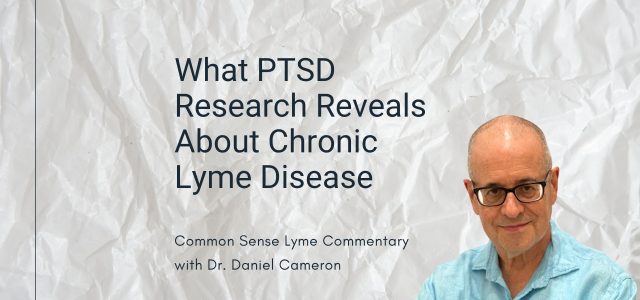
“I finished my antibiotics. I did everything right. So why am I still sick?”
That’s what one of my Lyme patients told me—months after treatment. Her fatigue hadn’t lifted. Her memory still slipped. Her symptoms weren’t improving.
And she’s not alone.
A landmark 20-year study of World Trade Center first responders—recently published in Nature Mental Health—offers a striking parallel.
Researchers followed more than 12,000 responders and found that 10% still had PTSD symptoms two decades after 9/11. Even more surprising: symptom peaks occurred years after the trauma, not right away. For many, symptoms didn’t gradually improve—they got worse.
In Lyme disease, we see the same thing.
Chronic Illness Doesn’t Follow a Straight Line
Lyme patients are often told their symptoms will resolve with a 2- to 4-week course of antibiotics. When they don’t, they’re left in limbo—sometimes doubting themselves, often doubted by others.
But what if the model is wrong?
Just as PTSD doesn’t follow a fixed recovery curve, chronic Lyme disease doesn’t follow a textbook timeline either.
In the 9/11 study, participants were assessed using a standardized PTSD severity scale. Some responders showed early recovery. Others worsened gradually. A significant number saw their worst symptoms nearly a decade after exposure.
I’ve seen this in Lyme disease:
-
Patients who initially improved, then relapsed a year later
-
Individuals whose symptoms worsened during periods of stress, life transitions, or immune system changes
-
People who were dismissed because “treatment was already completed”
A Real Patient Story: Lyme Doesn’t Always Peak Early
One of my patients was in her mid-60s when she got Lyme disease. At first, treatment helped. Her joint pain lessened, her energy came back. She went back to gardening and hiking.
But a year later—after a respiratory illness and a period of poor sleep—her symptoms surged. Brain fog, dizziness, word-finding difficulty, crushing fatigue. Her labs were inconclusive. She was told she had fibromyalgia or anxiety.
We treated her again. This time with combination therapy for Lyme and Babesia, alongside supportive care. It wasn’t quick, but she slowly improved.
Her symptom peak didn’t come in month one—it came in year two. Just like the PTSD responders.
PTSD and Lyme Disease Share More Than We Realize
A trauma isn’t always physical. And an infection isn’t always over once the treatment ends. Chronic Lyme disease and long-term PTSD share critical patterns:
🔁 Common Challenges in PTSD and Lyme Disease:
-
Long delays before symptoms are taken seriously
-
Peaks in severity months or years after the initial event
-
Dismissal of persistent symptoms as psychological
-
Lack of sustained care models for long-term support
-
Deep variability in how patients respond over time
-
Shared symptoms: brain fog, insomnia, fatigue
This isn’t coincidence. It’s a call for a better approach.
Final Thought
We don’t expect PTSD to resolve in 30 days.
So why do we expect that of Lyme disease?
Lyme, like trauma, can linger.
It can return.
It can worsen—especially when we stop listening.
If we want better outcomes, we need better models.
Ones that account for the long arc of recovery.
Ones that treat people, not just protocols.
Because some patients get better quickly. Others don’t.
And both deserve care.


